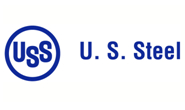Market Segment

August 3, 2021
USS Eyes 'Organic' Growth at Mines, Finishing Lines: Burritt
Written by Michael Cowden
U.S. Steel plans to focus on organic growth – expanding its existing operations – rather than on mergers and acquisitions, company executives said.
“Don’t be looking for us to add a bunch of capacity, look for us to build capability for profitable growth,” President and Chief Executive Officer David Burritt said during a conference call with analysts.
![]()
And the Pittsburgh-based steelmaker will mostly look to grow in areas where it is already strong.
Downstream that includes value-added products such as non-grain-oriented electrical steels (NGOES) made at U.S. Steel’s Big River Steel mill in Osceola, Ark. It also includes U.S. Steel’s PRO-TEC Coating joint venture in Leipsic, Ohio, with Japan’s Kobe Steel Ltd., Burritt said.
PRO-TEC features continuous annealing, galvanizing and galvannealing lines designed specifically for automakers in the region. “We have what we believe is the best finishing line possibly in the world. … And we’re getting qualified on new grades of steel there as well,” he said.
NGOES, meanwhile, is expected to see increased demand as the auto industry increasingly switches from internal combustion engines to electric vehicles.
Also on the automotive front, U.S. Steel has seen increased interest from customers in its verdeX generation-three advanced high-strength steels.
U.S. Steel is marketing verdeX as a “green steel” with lower carbon emissions than traditional steel. Low-carbon AHSS was made possible by the company’s acquisition of Big River Steel, whose 3.3 million tons per year come via the EAF route instead of the integrated route.
“We’re not about out-negotiating our customers. We’re about partnering with our customers,” Burritt said. “This is something that commands a premium and delivers on their decarbonization goals.”
Sources have speculated about what might happen to the market if EAF steelmakers, which have traditionally supplied less-demanding markets such as welded tubulars and metal building products, increasingly shift their focus to the automotive sector, an area traditionally dominated by integrated mills.
Upstream, U.S. Steel thinks its mines are a competitive advantage. And that comes not only to providing pellets for the company’s blast furnaces but also when it comes to sales abroad, Burritt said.
“We pretty much own the seaborne market and have customers outside of U.S. Steel because of our low-cost position,” he said.
And thanks to its blast furnaces, U.S. Steel also has the potential to make pig iron, something that could become increasingly important for EAF steelmakers as more capacity via that route is added to the market both in the U.S. and abroad.
“We have the opportunity to create pig (iron),” Burritt said. “We have several locations where it’s possible to do that. And that’s certainly something that’s under discussion.”
Other reasons behind U.S. Steel’s optimism is government stimulus and an infrastructure bill that Burritt called “inevitable.”
“We’re thrilled, frankly, with ‘Build Back Better’ with Biden,” he said. “This infrastructure bill is going to be a breakthrough for manufacturing in the United States.”
Senate Democrats want to vote on the bill before a month-long recess that begins on Aug. 9. Republicans want to slow the bill down, according to CNBC.
As for prices, U.S. Steel sees them remaining strong into the second half of the year. “As we’ve said, stronger for longer,” Burritt said. “In fact, later it’s going to be greater.”
He sees a possible correction in prices, but not a disastrous one. “We do know there will be more of a reversion to the mean, but more likely than not it’s probably going to be reset at a higher number than in the past,” he said.
There’s no sign of that reset yet. Steel Market Update’s benchmark hot-rolled coil price has risen week-over-week for almost a year.
HRC prices were at $1,860 per ton when this article was filed, up 89% from $985 per ton at the beginning of the year and more than fourfold from $450 per ton a year ago, according to SMU’s interactive price tool.
By Michael Cowden, Michael@SteelMarketUpdate.com







